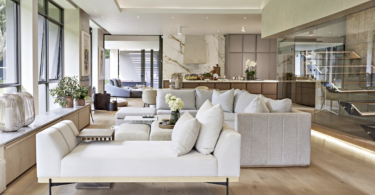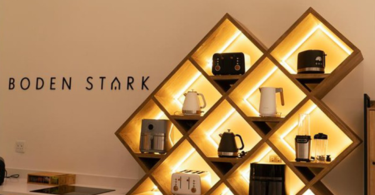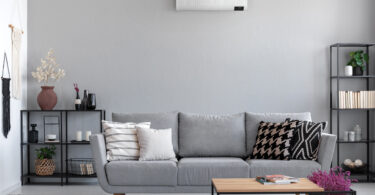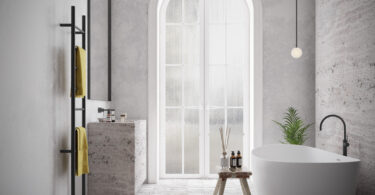When it comes to interior design, lighting often takes a backseat as a utilitarian aspect of a room. However, lighting can be a game-changer, adding aesthetic value and taking your design to the next level. Shahin Carrim, managing director of MHC World shares his top tips to effortlessly light up each room in your home, whether you’re tweaking your existing lighting or creating a new layout from scratch.
The three main types of indoor lighting
One common mistake people make is assuming that one type of lighting, especially overhead lighting, is enough for a room. But lighting works best when used in layers. There are three main types of indoor lighting: ambient, accent, and task lighting. Ideally, each room should have all three types:
- Ambient lighting fills the majority of the room and provides general lighting. It can come from recessed lighting, track lighting, or wall-mounted fixtures.
- Accent lighting highlights a particular focal point, such as a piece of wall art. Common sources of accent lighting include picture lights, wall-mounted fixtures, or track lighting with dimmers to adjust the mood.
- Task lighting assists in completing a specific function, such as a desk lamp or pendant light over a kitchen island.
Standard layouts for every room
Now that you know your different lighting options, it’s time to decide how and where to place your light sources in each room. While personal preference ultimately dictates the layout, some standard layouts work well. Here are some room-by-room lighting tips:
- Entryway: Start with a dramatic pendant light or chandelier overhead. Then supplement with either a table or floor lamp.
- Living room: Use track or recessed lighting throughout the room. If your room has a main seating area, use a larger overhead fixture to centre it. Place floor lamps where needed to light shadowy corners. Finally, add a table lamp near a buffet or large furniture piece.
- Dining room: The main source of lighting should come from a large pendant light or chandelier centred over the dining table. If there are additional dark corners, use a floor or table lamp to supplement.
- Kitchen: Start with recessed lighting. Focal areas like the kitchen island and dining table should have overhead pendants or chandeliers. Work areas benefit from under-cabinet lighting, and task lighting can be added near the sink and stove.
- Bedroom: Ideally, bedrooms should have a main overhead light source and table lamps on nightstands or dressers.
- Bathroom: Recessed lighting is common, and task lighting can be added around a mirror or an overhead source above the tub.
- Office: Start with recessed lighting or a main overhead source. Then add table or floor lamps in dark corners or by seating areas. Finally, use a desk lamp in your main work area.
Size and aesthetics of lighting fixtures
When choosing overhead lighting fixtures, size is crucial. To determine the ideal diameter for a fixture, measure the length and width of the room and add them together. Convert the sum from metres to centimetres to find the ideal diameter for your light source. For example, if the room is 3m x 4m, 3 + 4 = 7, so your fixture should be 70cm in diameter. If you’re centering the fixture over a piece of furniture, measure the length and width of that specific item instead. When it comes to aesthetics, make sure your lighting matches the style of the room.
Remember this!
Lighting is a crucial component of interior design that can elevate the aesthetics of any space. By understanding the different types of indoor lighting, such as ambient, accent, and task lighting, you can create a layered lighting plan that enhances both functionality and style.
To ensure that you are maximising the aesthetic appeal of your lighting, let the room guide you in determining the appropriate lighting layout. Additionally, finding the right fit in terms of the size and aesthetics of your lighting fixtures can make a significant difference in the overall impact of your design.
Visit www.mhcworld.co.za










Leave a Comment